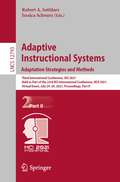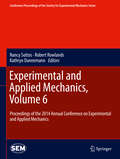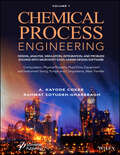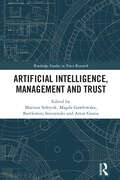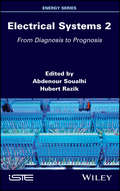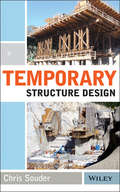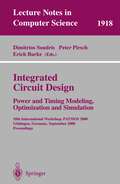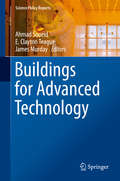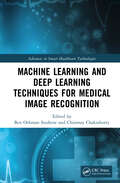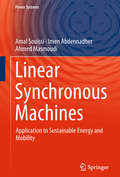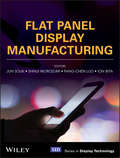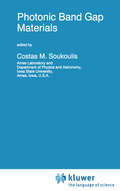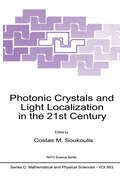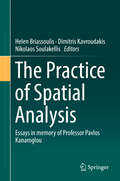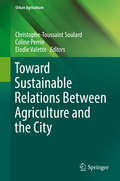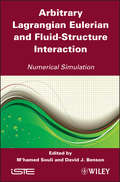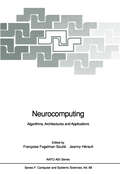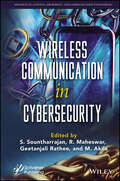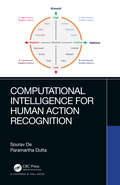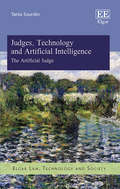- Table View
- List View
Adaptive Instructional Systems. Adaptation Strategies and Methods: Third International Conference, AIS 2021, Held as Part of the 23rd HCI International Conference, HCII 2021, Virtual Event, July 24–29, 2021, Proceedings, Part II (Lecture Notes in Computer Science #12793)
by Robert A. Sottilare Jessica SchwarzThis two-volume set LNCS 12774 and 12775 constitutes the refereed proceedings of the 12th International Conference on Social Computing and Social Media, SCSM 2021, held as part of the 23rd International Conference, HCI International 2021, which took place in July 2021. Due to COVID-19 pandemic the conference was held virtually. The total of 1276 papers and 241 poster papers included in the 39 HCII 2021 proceedings volumes was carefully reviewed and selected from 5222 submissions. The regular papers of AIS 2021, Part II, focus on Learner Modelling and State Assessment in AIS.
Experimental and Applied Mechanics, Volume 6: Proceedings of the 2014 Annual Conference on Experimental and Applied Mechanics (Conference Proceedings of the Society for Experimental Mechanics Series)
by Nancy Sottos Robert Rowlands Kathryn DannemannExperimental and Applied Mechanics, Volume 6: Proceedings of the 2014 Annual Conference on Experimental and Applied Mechanics, the sixth volume of eight from the Conference, brings together contributions to important areas of research and engineering. The collection presents early findings and case studies on a wide range of topics, including: Advances in Residual Stress Measurement MethodsResidual Stress Effects on Material PerformanceInverse Problems and Hybrid TechniquesThermoelastic Stress AnalysisInfrared TechniquesResearch in ProgressApplications in Experimental Mechanics
Chemical Process Engineering Volume 1: Design, Analysis, Simulation, Integration, and Problem Solving with Microsoft Excel-UniSim Software for Chemical Engineers Computation, Physical Property, Fluid Flow, Equipment and Instrument Sizing
by Rahmat Sotudeh-Gharebagh A. Kayode CokerCHEMICAL PROCESS ENGINEERING Written by two of the most prolific and respected chemical engineers in the world, this groundbreaking two-volume set is the “new standard” in the industry, offering engineers and students alike the most up-do-date, comprehensive, and state-of-the-art coverage of processes and best practices in the field today. This first new volume in a two-volume set explores and describes integrating new tools for engineering education and practice for better utilization of the existing knowledge on process design. Useful not only for students, professors, scientists and practitioners, especially process, chemical, mechanical and metallurgical engineers, it is also a valuable reference for other engineers, consultants, technicians and scientists concerned about various aspects of industrial design. The text can be considered as a complementary text to process design for senior and graduate students as well as a hands-on reference work or refresher for engineers at entry level. The contents of the book can also be taught in intensive workshops in the oil, gas, petrochemical, biochemical and process industries. The book provides a detailed description and hands-on experience on process design in chemical engineering, and it is an integrated text that focuses on practical design with new tools, such as Excel spreadsheets and UniSim simulation software. Written by two industry and university’s most trustworthy and well-known authors, this book is the new standard in chemical, biochemical, pharmaceutical, petrochemical and petroleum refining. Covering design, analysis, simulation, integration, and, perhaps most importantly, the practical application of Microsoft Excel-UniSim software, this is the most comprehensive and up-to-date coverage of all of the latest developments in the industry. It is a must-have for any engineer or student’s library.
Chemical Process Engineering Volume 1: Design, Analysis, Simulation, Integration, and Problem Solving with Microsoft Excel-UniSim Software for Chemical Engineers Computation, Physical Property, Fluid Flow, Equipment and Instrument Sizing
by Rahmat Sotudeh-Gharebagh A. Kayode CokerCHEMICAL PROCESS ENGINEERING Written by two of the most prolific and respected chemical engineers in the world, this groundbreaking two-volume set is the “new standard” in the industry, offering engineers and students alike the most up-do-date, comprehensive, and state-of-the-art coverage of processes and best practices in the field today. This first new volume in a two-volume set explores and describes integrating new tools for engineering education and practice for better utilization of the existing knowledge on process design. Useful not only for students, professors, scientists and practitioners, especially process, chemical, mechanical and metallurgical engineers, it is also a valuable reference for other engineers, consultants, technicians and scientists concerned about various aspects of industrial design. The text can be considered as a complementary text to process design for senior and graduate students as well as a hands-on reference work or refresher for engineers at entry level. The contents of the book can also be taught in intensive workshops in the oil, gas, petrochemical, biochemical and process industries. The book provides a detailed description and hands-on experience on process design in chemical engineering, and it is an integrated text that focuses on practical design with new tools, such as Excel spreadsheets and UniSim simulation software. Written by two industry and university’s most trustworthy and well-known authors, this book is the new standard in chemical, biochemical, pharmaceutical, petrochemical and petroleum refining. Covering design, analysis, simulation, integration, and, perhaps most importantly, the practical application of Microsoft Excel-UniSim software, this is the most comprehensive and up-to-date coverage of all of the latest developments in the industry. It is a must-have for any engineer or student’s library.
Artificial Intelligence, Management and Trust (Routledge Studies in Trust Research)
by Mariusz Sołtysik Magda Gawłowska Bartlomiej Sniezynski Artur GuniaThe main challenge related to the development of artificial intelligence (AI) is to establish harmonious human-AI relations, necessary for the proper use of its potential. AI will eventually transform many businesses and industries; its pace of development is influenced by the lack of trust on the part of society. AI autonomous decision-making is still in its infancy, but use cases are evolving at an ever-faster pace. Over time, AI will be responsible for making more decisions, and those decisions will be of greater importance. The monograph aims to comprehensively describe AI technology in three aspects: organizational, psychological, and technological in the context of the increasingly bold use of this technology in management. Recognizing the differences between trust in people and AI agents and identifying the key psychological factors that determine the development of trust in AI is crucial for the development of modern Industry 4.0 organizations. So far, little is known about trust in human-AI relationships and almost nothing about the psychological mechanisms involved. The monograph will contribute to a better understanding of how trust is built between people and AI agents, what makes AI agents trustworthy, and how their morality is assessed. It will therefore be of interest to researchers, academics, practitioners, and advanced students with an interest in trust research, management of technology and innovation, and organizational management.
Electrical Systems 2: From Diagnosis to Prognosis
by Abdenour Soualhi Hubert RazikMethods of diagnosis and prognosis play a key role in the reliability and safety of industrial systems. Failure diagnosis requires the use of suitable sensors, which provide signals that are processed to monitor features (health indicators) for defects. These features are required to distinguish between operating states, in order to inform the operator of the severity level, or even the type, of a failure. Prognosis is defined as the estimation of a system's lifespan, including how long remains and how long has passed. It also encompasses the prediction of impending failures. This is a challenge that many researchers are currently trying to address. Electrical Systems, a book in two volumes, informs readers of the theoretical solutions to this problem, and the results obtained in several laboratories in France, Spain and further afield. To this end, many researchers from the scientific community have contributed to this book to share their research results.
Electrical Systems 2: From Diagnosis to Prognosis
by Abdenour Soualhi Hubert RazikMethods of diagnosis and prognosis play a key role in the reliability and safety of industrial systems. Failure diagnosis requires the use of suitable sensors, which provide signals that are processed to monitor features (health indicators) for defects. These features are required to distinguish between operating states, in order to inform the operator of the severity level, or even the type, of a failure. Prognosis is defined as the estimation of a system's lifespan, including how long remains and how long has passed. It also encompasses the prediction of impending failures. This is a challenge that many researchers are currently trying to address. Electrical Systems, a book in two volumes, informs readers of the theoretical solutions to this problem, and the results obtained in several laboratories in France, Spain and further afield. To this end, many researchers from the scientific community have contributed to this book to share their research results.
Temporary Structure Design
by Christopher SouderA comprehensive guide to temporary structures in construction projects Temporary Structure Design is the first book of its kind, presenting students and professionals with authoritative coverage of the major concepts in designing temporary construction structures. Beginning with a review of statistics, it presents the core topics needed to fully comprehend the design of temporary structures: strength of materials; types of loads on temporary structures; scaffolding design; soil properties and soil loading; soldier beam, lagging, and tiebacks; sheet piling and strutting; pressure and forces on formwork and falsework; concrete formwork design; falsework; bracing and guying; trestles and equipment bridges; and the support of existing structures. Temporary structures during construction include scaffolding, formwork, shoring, ramps, platforms, earth-retaining structures, and other construction structures that are not part of the permanent installation. These structures are less regulated and monitored than most other parts of the construction process, even though they are often supporting tons of steel or concrete—and the safety of all workers on the site depends on these structures to perform as designed. Unfortunately, most tragic failures occur during construction and are usually the result of improperly designed, constructed, and/or maintained temporary structures. Temporary Structure Design fills an important need in the literature by providing a trusted, comprehensive guide to designing temporary construction structures. Serves as the first book to provide a design-oriented approach to the design of temporary structures Includes coverage of the various safety considerations inherent in temporary structure design and construction Provides information on estimating cost and schedules for these specialized structures Covers formwork and falsework, as well as personnel protection, production support, environmental protection, and foundational structures If you're a student or a professional working in the field of construction or structural engineering, Temporary Structure Design is a must-have resource you'll turn to again and again.
Temporary Structure Design
by Christopher SouderA comprehensive guide to temporary structures in construction projects Temporary Structure Design is the first book of its kind, presenting students and professionals with authoritative coverage of the major concepts in designing temporary construction structures. Beginning with a review of statistics, it presents the core topics needed to fully comprehend the design of temporary structures: strength of materials; types of loads on temporary structures; scaffolding design; soil properties and soil loading; soldier beam, lagging, and tiebacks; sheet piling and strutting; pressure and forces on formwork and falsework; concrete formwork design; falsework; bracing and guying; trestles and equipment bridges; and the support of existing structures. Temporary structures during construction include scaffolding, formwork, shoring, ramps, platforms, earth-retaining structures, and other construction structures that are not part of the permanent installation. These structures are less regulated and monitored than most other parts of the construction process, even though they are often supporting tons of steel or concrete—and the safety of all workers on the site depends on these structures to perform as designed. Unfortunately, most tragic failures occur during construction and are usually the result of improperly designed, constructed, and/or maintained temporary structures. Temporary Structure Design fills an important need in the literature by providing a trusted, comprehensive guide to designing temporary construction structures. Serves as the first book to provide a design-oriented approach to the design of temporary structures Includes coverage of the various safety considerations inherent in temporary structure design and construction Provides information on estimating cost and schedules for these specialized structures Covers formwork and falsework, as well as personnel protection, production support, environmental protection, and foundational structures If you're a student or a professional working in the field of construction or structural engineering, Temporary Structure Design is a must-have resource you'll turn to again and again.
Integrated Circuit Design: 10th International Workshop, PATMOS 2000, Göttingen, Germany, September 13-15, 2000 Proceedings (Lecture Notes in Computer Science #1918)
by Dimitrios Soudris Peter Pirsch Erich BarkeBuildings for Advanced Technology (Science Policy Reports)
by Ahmad Soueid E. Clayton Teague James MurdayThis book deals with the design and construction of buildings for nanoscale science and engineering research. The information provided in this book is useful for designing and constructing buildings for such advanced technologies as nanotechnology, nanoelectronics and biotechnology. The book outlines the technology challenges unique to each of the building environmental challenges outlined below and provides best practices and examples of engineering approaches to address them:• Establishing and maintaining critical environments: temperature, humidity, and pressure• Structural vibration isolation• Airborne vibration isolation (acoustic noise)• Isolation of mechanical equipment-generated vibration/acoustic noise• Cost-effective power conditioning• Grounding facilities for low electrical interference• Electromagnetic interference (EMI)/Radio frequency interference (RFI) isolation• Airborne particulate contamination• Airborne organic and chemical contamination• Environment, safety and health (ESH) considerations• Flexibility strategies for nanotechnology facilitiesThe authors are specialists and experts with knowledge and experience in thecontrol of environmental disturbances to buildings and experimental apparatus.
Machine Learning and Deep Learning Techniques for Medical Image Recognition (Advances in Smart Healthcare Technologies)
by Ben Othman Soufiene Chinmay ChakrabortyMachine Learning and Deep Learning Techniques for Medical Image Recognition comprehensively reviews deep learning-based algorithms in medical image analysis problems including medical image processing. It includes a detailed review of deep learning approaches for semantic object detection and segmentation in medical image computing and large-scale radiology database mining. A particular focus is placed on the application of convolutional neural networks with the theory and varied selection of techniques for semantic segmentation using deep learning principles in medical imaging supported by practical examples. Features: Offers important key aspects in the development and implementation of machine learning and deep learning approaches toward developing prediction tools and models and improving medical diagnosis Teaches how machine learning and deep learning algorithms are applied to a broad range of application areas, including chest X-ray, breast computer-aided detection, lung and chest, microscopy, and pathology Covers common research problems in medical image analysis and their challenges Focuses on aspects of deep learning and machine learning for combating COVID-19 Includes pertinent case studies This book is aimed at researchers and graduate students in computer engineering, artificial intelligence and machine learning, and biomedical imaging.
Linear Synchronous Machines: Application to Sustainable Energy and Mobility (Power Systems)
by Amal Souissi Imen Abdennadher Ahmed MasmoudiThis book introduces readers to two major sustainable applications of linear synchronous machines: wave energy conversion and magnetic levitation train technology. To do so, it begins with a state-of-the-art review of linear machines, covering induction and synchronous topologies and their applications, with a particular focus on sustainable applications. This is followed by an analysis of the electromagnetic modeling of linear synchronous machines, the goal being to investigate their main features, especially their force production capabilities.
Flat Panel Display Manufacturing (Wiley Series in Display Technology)
by Jun Souk Shinji Morozumi Fang-Chen Luo Ion BitaAn extensive introduction to the engineering and manufacture of current and next-generation flat panel displays This book provides a broad overview of the manufacturing of flat panel displays, with a particular emphasis on the display systems at the forefront of the current mobile device revolution. It is structured to cover a broad spectrum of topics within the unifying theme of display systems manufacturing. An important theme of this book is treating displays as systems, which expands the scope beyond the technologies and manufacturing of traditional display panels (LCD and OLED) to also include key components for mobile device applications, such as flexible OLED, thin LCD backlights, as well as the manufacturing of display module assemblies. Flat Panel Display Manufacturing fills an important gap in the current book literature describing the state of the art in display manufacturing for today's displays, and looks to create a reference the development of next generation displays. The editorial team brings a broad and deep perspective on flat panel display manufacturing, with a global view spanning decades of experience at leading institutions in Japan, Korea, Taiwan, and the USA, and including direct pioneering contributions to the development of displays. The book includes a total of 24 chapters contributed by experts at leading manufacturing institutions from the global FPD industry in Korea, Japan, Taiwan, Germany, Israel, and USA. Provides an overview of the evolution of display technologies and manufacturing Treats display products as systems with manifold applications, expanding the scope beyond traditional display panel manufacturing to key components for mobile devices and TV applications Provides a detailed overview of LCD manufacturing, including panel architectures, process flows, and module manufacturing Provides a detailed overview of OLED manufacturing for both mobile and TV applications, including a chapter dedicated to the young field of flexible OLED manufacturing Provides a detailed overview of the key unit processes and corresponding manufacturing equipment, including manufacturing test & repair of TFT array panels as well as display module inspection & repair Introduces key topics in display manufacturing science and engineering, including productivity & quality, factory architectures, and green manufacturing Flat Panel Display Manufacturing will appeal to professionals and engineers in R&D departments for display-related technology development, as well as to graduates and Ph.D. students specializing in LCD/OLED/other flat panel displays.
Flat Panel Display Manufacturing (Wiley Series in Display Technology)
by Jun Souk Shinji Morozumi Fang-Chen Luo Ion BitaAn extensive introduction to the engineering and manufacture of current and next-generation flat panel displays This book provides a broad overview of the manufacturing of flat panel displays, with a particular emphasis on the display systems at the forefront of the current mobile device revolution. It is structured to cover a broad spectrum of topics within the unifying theme of display systems manufacturing. An important theme of this book is treating displays as systems, which expands the scope beyond the technologies and manufacturing of traditional display panels (LCD and OLED) to also include key components for mobile device applications, such as flexible OLED, thin LCD backlights, as well as the manufacturing of display module assemblies. Flat Panel Display Manufacturing fills an important gap in the current book literature describing the state of the art in display manufacturing for today's displays, and looks to create a reference the development of next generation displays. The editorial team brings a broad and deep perspective on flat panel display manufacturing, with a global view spanning decades of experience at leading institutions in Japan, Korea, Taiwan, and the USA, and including direct pioneering contributions to the development of displays. The book includes a total of 24 chapters contributed by experts at leading manufacturing institutions from the global FPD industry in Korea, Japan, Taiwan, Germany, Israel, and USA. Provides an overview of the evolution of display technologies and manufacturing Treats display products as systems with manifold applications, expanding the scope beyond traditional display panel manufacturing to key components for mobile devices and TV applications Provides a detailed overview of LCD manufacturing, including panel architectures, process flows, and module manufacturing Provides a detailed overview of OLED manufacturing for both mobile and TV applications, including a chapter dedicated to the young field of flexible OLED manufacturing Provides a detailed overview of the key unit processes and corresponding manufacturing equipment, including manufacturing test & repair of TFT array panels as well as display module inspection & repair Introduces key topics in display manufacturing science and engineering, including productivity & quality, factory architectures, and green manufacturing Flat Panel Display Manufacturing will appeal to professionals and engineers in R&D departments for display-related technology development, as well as to graduates and Ph.D. students specializing in LCD/OLED/other flat panel displays.
Photonic Band Gap Materials (NATO Science Series E: #315)
by C. M. SoukoulisPhotonic band gap crystals offer unique ways to tailor light and the propagation of electromagnetic waves. In analogy to electrons in a crystal, EM waves propagating in a structure with a periodically-modulated dielectric constant are organized into photonic bands separated by gaps in which propagating states are forbidden. Proposed applications of such photonic band gap crystals, operating at frequencies from microwave to optical, include zero- threshold lasers, low-loss resonators and cavities, and efficient microwave antennas. Spontaneous emission is suppressed for photons in the photonic band gap, offering novel approaches to manipulating the EM field and creating high-efficiency light-emitting structures. Photonic Band Gap Materials identifies three most promising areas of research. The first is materials fabrication, involving the creation of high quality, low loss, periodic dielectric structures. The smallest photonic crystals yet fabricated have been made by machining Si wafers along (110), and some have lattice constants as small as 500 microns. The second area is in applications. Possible applications presented are microwave mirrors, directional antennas, resonators (especially in the 2 GHz region), filters, waveguides, Y splitters, and resonant microcavities. The third area covers fundamentally new physical phenomena in condensed matter physics and quantum optics. An excellent review of recent development, covering theoretical, experimental and applied aspects. Interesting and stimulating reading for active researchers, as well as a useful reference for non-specialists.
Photonic Crystals and Light Localization in the 21st Century (Nato Science Series C: #563)
by C. M. SoukoulisThis volume contains papers presented at the NATO Advanced Study Institute (ASI) Photonic Crystals and Light Localization held at the Creta Maris Hotel in Limin Hersonissou, Crete, June 18-30, 2000. Photonic crystals offer unique ways to tailor light and the propagation of electromagnetic waves (EM). In analogy to electrons in a crystal, EM waves propagating in a structure with a periodically modulated dielectric constant are organized into photonic bands, separated by gaps where propagating states are forbidden. There have been proposals for novel applications ofthese photonic band gap (PBG) crystals, with operating frequencies ranging from microwave to the optical regime, that include zero threshold lasers, low-loss resonators and cavities, and efficient microwave antennas. Spontaneous emission, suppressed for photons in the photonic band gap, offers novel approaches to manipulate the EM field and create high-efficiency light-emitting structures. Innovative ways to manipulate light can have a profound iofluence on science and technology.
The Practice of Spatial Analysis: Essays in memory of Professor Pavlos Kanaroglou
by Nikolaos Soulakellis Dimitris Kavroudakis Helen BriassoulisThis edited volume compiles a set of papers that present various applications of spatial analysis, both traditional and contemporary, on diverse subjects in a wide range of contexts. The volume is dedicated to the memory of the late Professor Pavlos Kanaroglou, McMaster University, Canada, who greatly contributed to scientific and applied research on spatial analysis. In his honor, the book offers a selection of various spatial analysis approaches to the study of contemporary urban transportation, land use, and air pollution issues. The first part of the book discusses selected general issues in spatial analysis; ontologies, agent-based modelling and accessibility analysis. The second part deals with urban transportation analysis and modelling issues; agent-based activity/travel microsimulation, bottleneck models, public transit use, freight transport and connected automated vehicles impact assessment. Part three focuses on integrated land use and transport analysis, discussing the land value impacts of public transport infrastructure, the role of transport provision on business evolution and commute distance considerations in urban relocation. The fourth part, on travel-related air pollution analysis, presents the development of a geo-information software for mapping Aerosol Optical Thickness in urban environments and the development of a neighborhood level, real time, internet-enabled, air pollution map in the Canadian urban context. This book will appeal to academics, researchers, graduate students, consultants, and practitioners working on topics related to spatial analysis, land use and transport analysis, planning and decision making, and air pollution studies.
Toward Sustainable Relations Between Agriculture and the City (Urban Agriculture)
by Christophe-Toussaint Soulard Coline Perrin Elodie ValetteThis book gives an overview of frameworks, methods, and case studies useful for the analysis of the relations between agriculture and the city, in Europe and the Mediterranean. Its originality lies in the analysis of urban food systems sustainability from an actors’ perspective. All the chapters consider the key role of actors in the definition of innovations and pathways, which enhance sustainability, seen as an ongoing process. Part 1 presents systemic approaches of agricultural-urban interactions at the city-region scale in France, Egypt, Italy and Morocco. Part 2 deals with methods and tools for urban planning and local development, utilized to design and assess sustainable food systems. The Part 3 inventories the recent changes in urban agriculture and the new forms of governance which are emerging in European cities (Athens, Berlin, Lisbon, Montpellier, Paris and Zurich). These results are useful for students, academics and activists involved in local policies and projects.
Arbitrary Lagrangian Eulerian and Fluid-Structure Interaction: Numerical Simulation (Iste Ser.)
by M'Hamed Souli David J. BensonThis book provides the fundamental basics for solving fluid structure interaction problems, and describes different algorithms and numerical methods used to solve problems where fluid and structure can be weakly or strongly coupled. These approaches are illustrated with examples arising from industrial or academic applications. Each of these approaches has its own performance and limitations. Given the book’s comprehensive coverage, engineers, graduate students and researchers involved in the simulation of practical fluid structure interaction problems will find this book extremely useful.
Neurocomputing: Algorithms, Architectures and Applications (NATO ASI Subseries F: #68)
by Francoise Fogelman Soulie Jeanny HeraultThis volume contains the collected papers of the NATO Conference on Neurocomputing, held in Les Arcs in February 1989. For many of us, this conference was reminiscent of another NATO Conference, in 1985, on Disordered Systems [1], which was the first conference on neural nets to be held in France. To some of the participants that conference opened, in a way, the field of neurocomputing (somewhat exotic at that time!) and also allowed for many future fruitful contacts. Since then, the field of neurocomputing has very much evolved and its audience has increased so widely that meetings in the US have often gathered more than 2000 participants. However, the NATO workshops have a distinct atmosphere of free discussions and time for exchange, and so, in 1988, we decided to go for another session. This was an ~casion for me and some of the early birds of the 1985 conference to realize how much, and how little too, the field had matured.
Wireless Communication in Cyber Security
by S. Sountharrajan R. Maheswar Geetanjali Rathee M. AkilaWIRELESS COMMUNICATION in CYBERSECURITY Presenting the concepts and advances of wireless communication in cybersecurity, this volume, written and edited by a global team of experts, also goes into the practical applications for the engineer, student, and other industry professionals. Rapid advancement in wireless communications and related technologies has led to the use of newer technologies like 6G, Internet of Things (IoT), Radar, and others. Not only are the technologies expanding, but the impact of wireless communication is also changing, becoming an inevitable part of daily life. With increased use comes great responsibilities and challenges for any newer technology. The growing risks in the direction of security, authentication, and encryption are some major areas of concern, together with user privacy and security. We have seen significant development in blockchain technology along with development in a wireless network that has proved extremely useful in solving various security issues. Quite efficient secure cyber-physical systems can be constructed using these technologies. This comprehensive new volume covers the many methods and technologies used in intrusion detection in wireless networks. This book allows readers to reach their solutions using various predictive algorithm-based approaches and some curated real-time protective examples that are defined herein. Artificial intelligence (AI) concepts are devised and proposed for helping readers understand the core concepts of efficiencies of threats, and the parallel solutions are covered. The chapters also state the challenges in privacy and security levels for various algorithms and various techniques and tools are proposed for each challenge. It focuses on providing exposure to readers about data security and privacy for wider domains. The editorial and author team aims to address all possible solutions to the various problems faced in the newer techniques of wireless communications, improving the accuracies and reliability over the possible vulnerabilities and security threats to wireless communications. It is a must have for any engineer, scientist, or other industry professional working in this area.
Wireless Communication in Cyber Security
by S. Sountharrajan R. Maheswar Geetanjali Rathee M. AkilaWIRELESS COMMUNICATION in CYBERSECURITY Presenting the concepts and advances of wireless communication in cybersecurity, this volume, written and edited by a global team of experts, also goes into the practical applications for the engineer, student, and other industry professionals. Rapid advancement in wireless communications and related technologies has led to the use of newer technologies like 6G, Internet of Things (IoT), Radar, and others. Not only are the technologies expanding, but the impact of wireless communication is also changing, becoming an inevitable part of daily life. With increased use comes great responsibilities and challenges for any newer technology. The growing risks in the direction of security, authentication, and encryption are some major areas of concern, together with user privacy and security. We have seen significant development in blockchain technology along with development in a wireless network that has proved extremely useful in solving various security issues. Quite efficient secure cyber-physical systems can be constructed using these technologies. This comprehensive new volume covers the many methods and technologies used in intrusion detection in wireless networks. This book allows readers to reach their solutions using various predictive algorithm-based approaches and some curated real-time protective examples that are defined herein. Artificial intelligence (AI) concepts are devised and proposed for helping readers understand the core concepts of efficiencies of threats, and the parallel solutions are covered. The chapters also state the challenges in privacy and security levels for various algorithms and various techniques and tools are proposed for each challenge. It focuses on providing exposure to readers about data security and privacy for wider domains. The editorial and author team aims to address all possible solutions to the various problems faced in the newer techniques of wireless communications, improving the accuracies and reliability over the possible vulnerabilities and security threats to wireless communications. It is a must have for any engineer, scientist, or other industry professional working in this area.
Computational Intelligence for Human Action Recognition (Chapman & Hall/CRC Computational Intelligence and Its Applications)
by Sourav De and Paramartha DuttaHuman Action Recognition is a challenging area presently. The vigor of research effort directed towards this domain is self indicative of this. With the ever-increasing involvement of Computational Intelligence in our day to day applications, the necessity of human activity recognition has been able to make its presence felt to the concerned research community. The primary drive of such an effort is to equip the computing system capable of recognizing and interpreting human activities from posture, pose, gesture, facial expression etc. The intent of human activity recognition is a formidable component of cognitive science in which researchers are actively engaged of late. Features: A systematic overview of the state-of-the-art in computational intelligence techniques for human action recognition. Emphasized on different intelligent techniques to recognize different human actions. Discussed about the automation techniques to handle human action recognition. Recent research results and some pointers to future advancements in this arena. In the present endeavour the editors intend to come out with a compilation that reflects the concerns of relevant research community. The readers would be able to come across some of the latest findings of active researchers of the concerned field. It is anticipated that this treatise shall be useful to the readership encompassing students at undergraduate and postgraduate level, researchers active as well as aspiring, not to speak of the senior researchers.
Judges, Technology and Artificial Intelligence: The Artificial Judge (Elgar Law, Technology and Society series)
by Tania SourdinNew and emerging technologies are reshaping justice systems and transforming the role of judges. The impacts vary according to how structural reforms take place and how courts adapt case management processes, online dispute resolution systems and justice apps. Significant shifts are also occurring with the development of more sophisticated forms of Artificial Intelligence that can support judicial work or even replace judges. These developments, together with shifts towards online court processes are explored in Judges, Technology and Artificial Intelligence. By considering how different jurisdictions are approaching current and future technological shifts and in particular by focusing on the different approaches in the US, UK, Australia and China and elsewhere, the author draws a rich comparative exploration of justice technology trends. Judicial commentary is considered as well as the growing scholarly discourse about these trends. Ethical and user centred design options are examined in the context of how responsive judges engage with supportive, replacement and disruptive technologies in courts. This book explores current issues regarding the responsiveness of the justice system in the pandemic era. In addition, how technology can respond and shift justice processes is a growing field of research, for judges, scholars, students and justice commentators. It provides a much-needed resource on an increasingly important topic.
